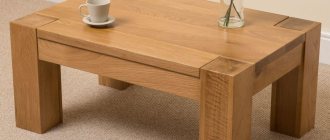Types of siphons and their design
Nowadays, most of these structures are made of inexpensive and fairly durable material – plastic. At the same time, neither Chinese nor European manufacturers, nor even domestic ones, disdain its use. Previously, like most plumbing products, they were made of metal, which in some cases does not withstand long-term use and deteriorates over time.
Plastic siphon with corrugated tube
The design of a siphon for a kitchen sink usually differs from one manufacturer to another, but the principle of operation is always the same. The design of the reinforcement may include several elements:
- Collapsible siphon;
- Several fittings for connecting to the sewerage system;
- Gaskets and seals for fittings;
- Corrugated or smooth tubes;
- Guide funnel;
- Nets and catchers;
- Gaskets, seals and hardware for attaching the structure to the sink.
Siphon set with overflow
The siphon for a double sink in the kitchen will differ significantly from the specified list. Despite the fact that its design elements will be the same, their number will be almost twice as large. Without instructions, it is therefore more difficult to assemble it. But at the same time, having assembled half of the structure, you can be sure of the successful completion of the task.
Siphon for double sink
Double siphon design for steam basin
It is also worth noting that the design becomes somewhat more complicated when choosing a siphon for a kitchen sink with an overflow. It adds a special overflow tube, usually made of corrugated plastic, auxiliary fittings and fasteners with gaskets. In this case, the gaskets are installed not only on the fitting connecting the siphon with the overflow, but also between the hole in the sink and the overflow hose adapter.
Brief instructions for assembling a siphon with overflow
The design becomes further complicated if the siphon is quite expensive and has an automated system for delaying and draining water in the sink. In this case, it can be equipped with a mechanical button, which, using a special connection, sets in motion a spring connected to a structure located inside the funnel. This design is movable and controls the drain valve when the button is pressed. In this case, a special place can be provided for the button itself on the sink, usually hidden by a plug.
Simple plastic siphon in the kitchen under the sink
Kinds
To better understand the principle of operation of the siphon, you should study the selected design. Each option has individual characteristics. Accordingly, all types of siphons may differ in their mechanism of action and level of effectiveness. When choosing, you should take into account the operating conditions of such a unit: the diameter of the supply pipe, the number of outlet pipes, the design of the siphon.
Depending on the design
Main options:
- bottle siphon - made in the form of a flask, the diameter of the widest part of which exceeds the size of the outlet tube, in addition, this structural element is located below the level of the supplied pipeline, due to which the liquid is retained inside;
- pipe siphon - does not have an expanded section (flask), is a tube with smooth walls, bent so that several elbows are formed, preventing the complete outflow of liquid from this unit;
- corrugated siphon - the simplest option, it is a tube with many stiffening ribs, such a product easily changes shape, but quickly becomes clogged;
- The telescopic version of the design allows you to change the dimensions of the unit, which consists of a large number of tubes of different diameters.
The sink drain is equipped using siphons of various types, which differ in location: corner, wall. These structures are in most cases located in rooms where there is not enough space to install standard products. In addition, there are single and double siphons. The first option is standard. A siphon for a double sink in a kitchen or bathroom has 2 outlet pipes, which allows you to organize a drain from several washbasins that are located nearby.
In relation to open areas
There are different types of such units, they differ in the installation method:
- hidden;
- open;
- flat.
The sink siphon in the first version has a standard design (usually a bottle type), but is mounted behind a partition. It is advisable to use this method if you need to hide communications or need to free up space under the sink.
Open devices are of the standard type. Installed under the sink/bath without restrictions on size and location. Flat analogs are recommended for installation when it is necessary to save space, for example, when installing a washing machine or built-in dishwasher.
A flat or short siphon for a sink is characterized by its small dimensions. The main element is a flattened bowl, characterized by a wide base. Thanks to these features, it becomes possible to free up space under the plumbing fixture.
With overflow
Such devices prevent flooding. A siphon with overflow has a more complex design. It provides the ability to drain water from the bathtub or sink when filling. Often plumbing fixtures have an additional hole. An outlet tube is connected to it. It is made in the form of corrugation.
However, the washbasin overflow is not always equipped when connected to an additional hole. There are models with a bottom valve. In this case, the device is triggered when such a need arises. Installing a sink overflow drain is not a mandatory measure. This function more effectively solves the problem of bathtub overflow.
Food waste shredder
It is advisable to install such devices in the kitchen under the sink. Hair often gets into the bathtub; there is no large debris in this plumbing fixture. For this reason, it is better to place the chopper in the kitchen. This solution eliminates the need for a garbage can, as all waste is processed and sent to the sewer system in the form of a mixture that contains fractions fine enough to pass through the pipes without the risk of clogging.
The chopper is located directly under the sink. It performs the function of a siphon, as it prevents the formation of unpleasant odors and helps reduce the risk of pipeline clogging. This device is larger in size than a standard sink drain in a bathroom or kitchen.
With bend
If you plan to connect only 1 plumbing fixture, then purchasing this design option is not advisable. It has 2 outlets - 1 of them is the main one, the second will be needed when arranging the drain of another sink or household appliance. The possibility of further installation is provided if the room is large enough. When there is no free space in the room, it is better to immediately choose a standard siphon model during installation.
With valve
It is possible to purchase a device with a non-return or air valve. This does not involve water. Such models operate on the principle of creating an obstacle in the form of an air plug. Siphon with check valve is designed to improve efficiency. It does not allow unpleasant odors from the sewer system to pass through, but water flows freely through this element in one direction. This principle is used in dry siphons.
It is advisable to use an air valve when you plan to connect several plumbing fixtures to a single drain. Then the effectiveness of the water seal decreases. This occurs due to more significant pressure drops in the connected pipes. As a result, the level of the water seal decreases, it ceases to perform its function, and unpleasant odors penetrate into the room. An air valve solves this problem.
Homemade siphon
This option is less reliable compared to standard designs that can be purchased ready-made. This is due to the high probability of errors during the assembly process. Considering that such structures consist of a large number of parts, it is possible to confuse them, even if the work is carried out according to the scheme. This is possible in the absence of experience in carrying out such work.
Corrugated
Such devices consist of a tube and a clamp, which allows you to form an elbow under the sink. The corrugated siphon for the sink is installed according to the simplest scheme. To do this, you just need to connect the tube at one end to the sewerage system, and the other to the outlet for the siphon. Then you need to position the corrugation so that the risk of blockage can be eliminated. At the last stage, the knee is fixed with a clamp. The advantages of such designs:
- the ability to change the configuration of the siphon, reduce or increase the length of the tube;
- ease of installation, and such a structure can be removed at any time for the purpose of replacement or repair.
The disadvantage is the susceptibility to blockages due to the stiffeners. In addition, such structures cannot withstand extreme temperatures.
Pipe
This is another simple option. However, unlike the corrugated analogue, in this case a smooth-walled tube is provided. It has the same shape: curved to form an elbow to retain water at the lowest point. The disadvantage of this device is the lack of adjustment capabilities, as well as the large dimensions of the finished structure. In addition, the liquid quickly evaporates inside, since it is retained in small quantities. However, such structures are not susceptible to blockages due to the smooth walls.
Bottle
Such devices are presented in several options, different in shape: square, round, rectangular. Advantages:
- this model is available with a different number of outlets, which allows you to connect several plumbing fixtures;
- versatility: bottle structures are used when arranging sink drains of any type;
- ease of maintenance, low likelihood of clogging;
- Precious items lost in the drain are retained in the lower part of the flask.
There are few disadvantages to such designs. The difficulty of installation is noted. In addition, they are characterized by large dimensions, especially if the siphon is double.
Dry
Thanks to the built-in valve, this unit operates efficiently in the absence of water in the pipe. In this case, a water seal is not required. When the flow of liquid into the pipe stops, the valve closes the inlet. This eliminates the possibility of the spread of unpleasant odors. Positive traits:
- there is no need to place the siphon in a vertical plane, as is the case with a water seal, since the operation of a dry device does not depend on the presence of water in the pipe;
- Considering that a humid environment is the most suitable for the proliferation of microorganisms, the use of a dry siphon can reduce the intensity of the spread of unpleasant odors.
The disadvantage of the device is the limited number of design options.
Flat and hidden
These are non-standard siphons. They differ in size. The main purpose is to free up space under the sink. This need arises in small rooms, as well as in cases where communications need to be hidden from prying eyes. Positive qualities of such structures:
- compactness;
- interior improvement.
However, due to their small size, such structures function less efficiently, due to their ability to retain a minimal amount of liquid. If the plumbing fixture is used infrequently, the water inside the siphon will have time to evaporate.
Purpose and design features
The drain-overflow is necessary so that the sink does not overflow with liquid, and the excess goes into the drain. Similar devices are used for metal or ceramic sinks. The devices practically repeat the design of a bath siphon.
The overflow in a sink is a hole in its upper part. When the owner does not close the tap, the liquid drains through this hole. A tube is connected to the overflow, through which the liquid flows. Most often the hole is made under the tap, but there are models in which it is located under the sink.
Siphon for the kitchen.
The washbasin waste and overflow includes 2 main parts:
- Curved siphon (like the Latin letter U). Its bend creates a water seal, which prevents unpleasant odors from spreading throughout the room.
- A drain pipe. It is a piece of rigid plastic construction or a section of corrugated pipe. The task is to redirect wastewater into the sewer system.
Thanks to the bending, the liquid does not leave the structure completely. If clogged, the sink siphon can be easily removed and cleaned using mechanical and chemical methods.
A grate is installed on the outside of the drain. It provides protection against clogs as it traps even hairs and smaller particles of debris.
Design features of different types of siphons
The simplest design is a pipe siphon. This is a curved pipe in the shape of the symbol “S” or “U”, which can be collapsible or non-dismountable. Its advantage is the need for precise alignment with the inlet to the sewer, resulting in a rigid drainage system.
USEFUL INFORMATION: Installing ventilation in the bathroom and toilet with your own hands
A classic of the 20th century – the bottle siphon. It is well known for its simplicity and ease of use and has the following features:
The miracle of the late 90s of the last century - the corrugated siphon - became fashionable along with interest in apartment redevelopment. This type of design has its advantages:
Hidden siphons began to be used relatively recently. They entered the apartments along with built-in sewage systems. This is the same bottle device, but hidden behind a partition and ennobled by a stainless steel pipe located outside.
A new product on the domestic market is a dry siphon, which functions not by creating a water plug, but thanks to a special membrane. When water enters, it opens and releases water, and then contracts again, tightly closing the flow hole and preventing water and odors from returning.
Connection to sewerage
On the side of the base there is another hole on which the connecting tube for sewage is mounted. The degree of complexity of its connection will directly depend on the type of tube. Smooth tubes are often prefabricated and its parts are attached to each other using fittings and additional gaskets. In addition, their manufacturer often makes them large with a length margin. Therefore, they often have to be cut using a hacksaw or grinder, having previously measured the required length. Do not forget that some tubes may have a mutually insertable design, due to which the distance between the connecting nodes can be adjusted.
You can install a siphon in the kitchen with your own hands, it won’t be difficult
Corrugated tubes are much easier to install. They rarely have to be cut, and their length can be adjusted using the usual assembly and stretching of tubes according to the accordion principle. But when choosing a siphon, do not forget that such tubes are more likely to become clogged due to their design, especially when used in the kitchen.
The tube is connected to the siphon using a fitting with gaskets according to the principle described above, and its connection to the sewer inlet is made using a rubber adapter - a gasket. Most often, it is inserted inside the hole, and a connecting tube is installed in its inner diameter.
Connecting a bottle siphon to the sewer using a corrugated tube
Siphon installation: step-by-step instructions
It is better to entrust the installation of plumbing fixtures in general and drain fittings in particular to professionals. But no one will judge you if you decide to do it yourself. Plastic systems do not require additional tools; only a screwdriver is needed to install the outlet. All components are screwed in by hand. Arm yourself with photo instructions, a good mood and you can get started.
First of all, the upper part of the outlet is screwed on. Often it is made of stainless steel. The drain system kit includes an O-ring for the decorative mesh. Place it on the drain hole of the sink, press the rubber seal and the rest of the outlet from below. Screw the two pieces together tightly. Check whether the seals have moved.
Diagram: siphon installation
Connect the overflow hose to the outlet and the mesh to the sink by tightening the stainless bolt in the same way as the outlet system. Screw the assembled siphon to the outlet using a plastic nut located on the neck. Be sure to check for a flat gasket. Tighten the nut all the way by hand. Don't put too much pressure on it. The plastic may not withstand the pressure and burst.
In the same way, screw the outlet pipe to the siphon body. Be sure to check the presence of the seal. Then connect the outlet pipe to the sewer system using a cone seal. It is installed, as on the siphon neck, with the narrowed part towards the hole into which the pipe is inserted.
Siphon equipment
If there is a difference in the diameters of the pipe and the outlet of the sewer system, you can use reducing plastic or rubber adapters.
Advice. For better sealing, lubricate all cuffs and gaskets with silicone lubricant. The entrance of the outlet pipe to the sewer can be additionally sealed with sanitary silicone.
After installing the system, you must perform a test run. To do this, fill the sink with water up to the overflow hole. First check its operation. Then open the drain, the water will quickly flow into the sewer. Carefully inspect each siphon connection. If not a single drop forms on it, it means the installation was successful.
Connecting a siphon to a double sink
Connecting a siphon to the sewer
When the device is assembled, it must be partially dismantled. To do this, disconnect the flask (unscrew the nut). Then a metal grid is connected to the cylindrical element, and 2 gaskets are placed between them. This structure will be located in the drain.
First, a grate and gasket are installed in the hole. Then, under the sink in the same area, a pipe is placed with a pre-fixed seal on the wider part. They should be fastened with a metal screw.
At the next stage, the previously assembled siphon structure is attached to the element protruding under the sink. The plastic nut is tightened without using a tool so as not to strip the thread. The entire structure is collapsible. If necessary, it can be dismantled, which allows you to regularly clean the flask and corrugated tube from contamination.
Connecting the siphon to the sewer system.
The siphon must be positioned correctly. So, the corrugated pipe should be located on the side of the sewer (its inlet). This will make it easier to connect this device. However, this is not always possible, so corrugations of a longer length than required are often used. This measure will allow you to connect the flask outlet and the sewer pipe.
To connect the siphon to the sewer, you need to install the free end of the corrugation into the pipe of the sewer system. It is already equipped with a seal that ensures tightness. Communications are located at a certain slope. This factor and the presence of a rubber gasket ensure the unhindered outflow of contaminated water and do not allow waste water to flow back.
If, after connecting the water supply riser, drops of water appear on one of its sections, this may be a consequence of incorrect installation or a manufacturing defect. In both cases the defect is eliminated. For example, in the case where the cause of the leak was an assembly error, it is enough to unscrew all threaded connections and repeat all assembly steps.
If water droplets still appear after dismantling and reassembling, you can use silicone sealant. The components included in its composition will ensure the tightness of the connections. The threads are treated with sealant on the outer and inner sides. Then, after hardening, an impermeable film forms at the leak site.
DIY Installation Instructions
Connecting a siphon to a sink is a relatively simple task. Anyone can certainly cope with it without the help of a master plumber. However, this matter should be approached responsibly, since neglect leads to a number of negative consequences - leaks under the sink, stench, etc.
Dismantling the old device
When planning to replace a siphon, you need to carefully dismantle the device that has served its purpose before proceeding with the installation of a new product. Holding it from below, use a screwdriver to unscrew the screw located in the center of the drain grille. Then all that remains is to disconnect the pipe from the sewer pipe.
There is always some amount of liquid in the siphon, therefore, when disassembling, it is advisable to place a basin or bucket under the sink to catch the remaining waste water
During the dismantling process, many people have difficulty removing the screw. Over time, it often becomes tightly attached to the nut. The problem is solved by removing the lower part of the equipment and turning the pipe. In advanced cases, you will have to use powerful chemical solvents.
For further work, it is necessary to prepare the sewer socket by thoroughly cleaning its internal surface. It is important to follow safety precautions by wearing latex gloves and a petal respirator.
If the pipe is cast iron, you may need a small hammer and chisel. After cleaning, it is better to cover the opening of the bell with a moistened rag or a cork of suitable size for the duration of the installation procedures.
Features of assembly and installation
Before starting installation, it is recommended that you read the instructions for the purchased product in detail, check the availability and ensure the integrity of all components. There should be no cracks, chips or damage on them.
You also need to prepare a set of tools (screwdriver, silicone sealant, knife, flashlight) and wipe the mounting surfaces dry. The process consists of two main stages - assembly and installation of the device.
It makes sense to arrange the individual parts of the siphon in advance in the order of subsequent connection. This helps you navigate correctly and quickly during installation.
The actions are performed in the following order:
- A protective metal grill is installed in the sink drain opening and a flat seal is applied. If the hole depth is insufficient, a small amount of sealant can be used instead of a gasket.
- A thick rubber cuff is inserted onto the upper side of the outlet pipe; sometimes it is glued in at the production stage, after which it is pressed against the drain from below.
- A long screw is inserted into the hole in the mesh. It is securely fixed so that the flange with the installed gasket does not rotate. If the purchased kit does not include a protective metal grille, the pipe is secured under the sink with a plastic nut.
- A siphon in the form of a flask, curved tube or corrugation is attached to the pipe. A union nut is placed on its free end with the thread down. With the wide side facing it, a cone seal is installed 2–3 cm from the edge.
- A pipe is inserted into the socket to the required length and the nut is carefully tightened by hand.
- A conical gasket with a nut is attached to the outlet pipe, connecting it to the drain opening of the siphon. Its free pipe is inserted into the sewer outlet using a thick rubber cuff. If the pipe diameters do not match, special adapters can be used.
- If the siphon is equipped with a connection pipe for connecting a washing machine, equipment is connected to it in accordance with the instructions given in the article we recommend.
After connection, the functionality of the siphon is checked. To do this, turn on the water, gradually opening the tap to maximum. The product will fill with liquid and a water seal will form.
If leaks are noticed during diagnostics, you need to tighten the connections in problem areas again or treat the cracks with sealant
The correctness of the installation will be confirmed by the absence of leaks and good flow of liquid through the drain hole of the sink without any stagnation. If deficiencies are identified, they must be urgently corrected and checked again.
Sink siphon with overflow characteristics
A sink siphon with low tide will help protect your apartment from accidental flooding
It is a pipe that facilitates the exit of water when it reaches the level of the mark. It turns out that this element provides insurance. This invention pleased the plumbing market with its appearance relatively recently. The fact is that in Europe there has been an increase in cases of flooding due to water overflowing through the sink element. Such phenomena occurred in the kitchen or bathroom area. In this regard, prudent Europeans invented an additional hole that reduces the risk of overflow.
Beautiful ceramic washbasin ELITE 007C Ceramic, equipped with a siphon with ebb
Burlington Edwardian B8 T21A CHR washbasin with chrome siphon
Manufacturing materials
In the modern world, the production of such devices from several materials has been established, each of which has its own positive and negative sides.
Plastic siphons are becoming more popular today. This popularity is achieved due to the low cost of the products and their good performance characteristics. By the way, siphons made of plastic are very light, but they are endowed with high strength. It is important that such siphons can be cleaned with chemicals, since they are impervious to chemical influences. Another advantage is the ease of installation of such a product, regardless of the installation location
Among other things, plastic resists the formation of limescale, which is important; Siphons made of non-ferrous metals (bronze/copper). Every person has an idea of what a siphon is, so there is no point in talking about the negative aspects of copper and bronze here
It is clear that non-ferrous metals require considerable effort to keep them in a presentable form. However, if there is a specific design in the room, the overall stylistic decision may require the installation of just such siphons, because plastic or brass products can stand out from the general range and violate the style; Brass siphons are currently the most expensive. The chrome coating of this product allows it to harmonize perfectly with other interior elements made of brass and metal, for example, a dryer. Brass requires due respect, so its care must be careful, while its performance characteristics leave much to be desired. It is worth saying that siphons made of brass have increased fragility.
Rules for choosing a siphon for a kitchen sink
You need to determine which type of structure is most suitable for installation in the kitchen under the sink: bottle, corrugated, straight, rigid, flexible, double. If you will be connecting household appliances, purchase a model with 1 or 2 additional pipes. When the washing machine is installed in the bathroom and there is no dishwasher in the kitchen, they use the classic version - with 1 pipe near the flask.
Take into account the material from which the plumbing fixture is made. Plastic devices are often considered. When choosing, pay attention to the configuration of the tube and the availability of free space under the sink. The material from which the gaskets are made also plays a role. Before purchasing a device, you need to match the diameter of the drain hole and the grille that is included in the kit.
Types of siphons and differences between them
Rectangular basins with low tide in the design of a spacious bathroom
A siphon for a kitchen sink with an overflow can be found in three varieties.
The bottle-type product is represented by a device with an elbow. This invention appeared earlier than other model varieties. Early developments were made in Europe to prevent clogging. They were used widely and provided users with many opportunities, preventing the possibility of a flood.
The structure of a bottle-type siphon
Pipe-type models are quite simple and are represented by plastic pipes. The model became popular in the 2000s and quickly consolidated its market position in the field of plumbing. Therefore, they presented an assortment of many objects in Russia and Europe.
Pipe-type siphon models have become very popular
Corrugated polypropylene components can be turned in any direction because they have a corrugation. This model will be an excellent solution for any type of plumbing – it helps solve a wide range of problems. The model range can be made from a large number of base materials.
Corrugated polypropylene components are very easy to use
So, if you decide to buy a siphon for a sink with an overflow, you can keep in mind that there are a large number of options that will ensure the safety of property and peace of mind for the owners of a house or apartment.
How to choose the right siphon
If you decide to manually select and install a siphon, pay attention to the following recommendations:
- buy a siphon along with the sink or after you purchase the sink. This will make it easier to select sizes or even install elements from a single set;
- Siphons are sold together with pipes of different diameters. The smaller it is, the more often you will have to clean the pipe from blockages, since a small connector will not allow all contaminants to quickly pass into the sewer;
- When choosing a siphon for your kitchen sink, be sure to check the drainage elements. It is likely that you will come across defective products, especially those that have threads. If you use parts with chips and burrs, the joint will not be of high quality, and the gaskets will be damaged;
- If you have dishwashing and washing equipment next to the sink, you should definitely provide for water drainage into the sewer, so take care of an additional outlet for connecting the pipe through which the drain will be carried out. At the purchasing stage, decide how the siphon is attached to the kitchen sink. Calculate how much space you can allocate for these purposes, and choose models that suit your parameters.
Connection to sink
After the cone is securely attached to the siphon, it can be mounted on the sink. The pre-assembled structure is placed under the drain hole in the sink. A rubber or silicone gasket must be installed between them to prevent leakage. Its outer diameter should match the diameter of the top of the funnel. The assembled structure needs to be centered again to avoid leaks.
Metal siphon is the most expensive of the possible options
Another pair of elements is installed on top of the drain hole in the sink. This is a mesh or lattice and its corresponding gasket. Sometimes it is missing, but this is not a problem, since the main function is always performed by the gasket located between the sink and the funnel.
The corresponding supplied screw or other hardware is installed in the center of the grille. When it is screwed, the parts of the structure are connected, and the stronger the connection, the lower the likelihood of future leakage.
The siphon is one of the most important parts in a home plumbing system.
Bottle siphon attached to the kitchen sink
The connection between the siphon and the sink may not end there. Additional operations are required when the sink model is equipped with an overflow hole, and the siphon has an addition in the form of an overflow tube with an adapter.
The adapter is usually attached to the sink with a screw, and a gasket is also installed between it and the sink. The tube is connected to the adapter and the siphon using the same fasteners that are used to connect the funnel to the siphon.
Pipe metal siphon on a large sink in the kitchen
Areas of application for siphons
Despite the apparent simplicity of the process of pouring water from a bathtub or sink, a small device called a siphon is used to implement it. Its simplest models in the form of a curved tube and the most complex modern siphons with automatic control perform two mutually exclusive functions. They freely drain water into the sewer system and hermetically seal the channel section, preventing odors from the sewer system from entering the bathroom. The shape of the siphon should ensure minimal hydraulic resistance at the set capacity and prevent the formation of blockages.
Having examined the design of a bath siphon and its varieties presented on the plumbing equipment market, we can state the fact that each of them can be successfully used in a wide variety of design options. A simple plastic tubular siphon will fit very well in a metal bathtub of a city apartment and will work flawlessly for a long time.
But a siphon for a cast-iron bathtub in an exclusive design, and even standing separately in the middle of the room, should emphasize the sophistication of the interior with its appearance. Numerous models of acrylic bathtubs of different sizes and configurations are usually equipped with chrome-plated decorative elements, among which a metal siphon for an acrylic bathtub will not look like a foreign body, and in a “Smart Home” room saturated with automation, the presence of a fully automated system will not be out of place.
Siphon assembly and installation
Upon completion of preparation, you can proceed directly to the installation of the siphon. Assembly can be started in different ways. The first method involves pre-assembling the base of the structure and securing it to the sink. But you can also go the opposite way and gradually assemble all the elements directly at the sink. This does not change the essence, but in some cases both options may be uncomfortable for the plumber, or for you, depending on who is involved in the work.
Regardless of the type of water seal, installation is carried out according to the same principle
Many people recommend pre-assembling the main part and then installing it directly on the sink, citing the fact that there is not much space under it for maneuvering hands and tools, and there is usually no light at all. Therefore, we will assemble the siphon and fittings in parts.
Installation of the structure on the sink
Types of siphons: features of choice
Too many different models can drive you crazy. Therefore, you first need to understand the functional features of each type and understand which device is suitable for your purposes.
The most common typology of wastewater disposal systems is considered to be based on two characteristics:
You should focus on the material, depending on where the sink is located and how much space can be allocated for the siphon under it. There are basically two options on the market today:
Reference! Sometimes a siphon is sold together with a washbasin, but by selecting this part yourself, you can find a more convenient solution for a specific situation.
Based on how the structure is constructed, there are four types of siphons:
For Bath
Siphons can vary in appearance. Thus, the types of siphons differ depending on the purpose set for it. Today you can find the following devices on sale:
- for Bath;
- for the sink;
- for kitchen sink;
- for aquarium.
It goes without saying that the first three types of siphons are the most popular. Bath products deserve special attention, since their system includes two pipes:
- plum;
- overflow.
Siphon under the sink
The connection of these pipes occurs near the place where the water seal is formed. It is through this combined pipe that the used water flows into the sewer. An overflow pipe is necessary to prevent flooding because excess water drains away through it. It is worth saying that modern bathtubs may have a hole for water drainage in the most unusual place. Based on this, the siphon selection should be made individually each time.
When choosing a siphon for your bath, it is important to remember that it should be very easy to adjust. It is best if the siphon is provided with an automatic drain
This design is very simple and standard - water is drawn in with the drain plugged, while drainage is carried out with the drain open.
How to install a siphon correctly
The question of how to assemble a siphon for a sink often leads novice home craftsmen to a dead end. To understand this issue in detail, you just need to carefully familiarize yourself with the structure of siphons and their varieties.
A kitchen sink drain starts from a round drainage hole at the bottom of the sink. It is the upper part of the siphon and is connected to it using a special hollow bolt, into which the protective mesh will then fit (Fig. 5). When installing a siphon in the kitchen, it is very important to additionally waterproof this connection, since it is a weak point in the sink-siphon system.
Figure 3. Operating principle of a dry shutter.
Before installing a new siphon, it is recommended to carefully study the instructions and clearly determine for yourself the future position and purpose of all parts. In addition to the instructions, there is often a diagram of the device and structure of the siphon, so even with minimal skills it will not be difficult to assemble it correctly.
Before proceeding directly with the installation, you should select a siphon that is most suitable for your sink. First, calculate, at least approximately, the water consumption created by water-consuming equipment - washing machines and dishwashers. The diameter of the drain pipe depends on their power, since if the sewer clearance is insufficient, overloading of the pipes can occur and, as a result, an apartment-scale flood, which is called overflow.
Expensive designer sinks go on sale complete with a siphon, since they can differ not only in color, but also in shape and functionality. The remaining sinks, which are in the middle and budget price categories, are designed in such a way that standard water seals fit them. The main advantage in this case is the ability to easily replace a damaged siphon with a similar standard model.
Preparatory activities
Before assembling a siphon for a kitchen sink, be sure to make sure that all the complete parts are in place and all the necessary tools are within sight. Otherwise, assembly problems will occur. But before you start assembling the siphon, make sure that you do not need to dismantle the old siphon, which has failed and requires urgent replacement.
The most necessary elements for assembling a siphon
If, nevertheless, the old siphon is installed, remove it carefully so as not to damage the existing plumbing. Otherwise, you will have to change not only the siphon, but also the sink with tap or mixer, depending on the scale of the home disaster.
Before dismantling, install a container under the sink to remove excess, stagnant water and other fractions from the old siphon or sink, if there is anything left in it before the repair begins.
Kitchen double sink with metal siphon
If the old siphon was attached to the sink with a screw, use a screwdriver with the appropriate attachment, since using a screwdriver of the appropriate size is not always effective, because during operation the metal from which the screw is made may be subject to rust or corrosion. They are the ones who block it inside the structure and do not allow the siphon to be dismantled.
Replacing a siphon is not a difficult task, but requires a certain tool and an understanding of the principle of the device
If the notches on the screw or other fastening hardware holding the mesh are worn out for some reason, cut the mesh to remove the siphon. This element can be sacrificed, but you need to act carefully so as not to get hurt. To do this, you can use wire cutters or metal scissors. So, you will need to cut the mesh around the screw head, and then the siphon will instantly separate from the sink
It is important not to miss this moment so as not to stain everything around. Grab the siphon from below and collect the liquid in an already prepared container
Carefully remove any remaining mesh from the surface of the sink, and then use a rag to wipe the surface of the sink to remove any dirt that may have accumulated under the mesh and rubber lining.
Draining liquid in the sink will depend on the correct installation of the siphon
Do not forget that the siphon is also connected to the sewer. Usually there is a rubber seal between the connecting tube and the entrance to the sewer, ensuring a tight connection. This may cause difficulty in removing the tube.
If the sink is new and you just need to install a siphon on it, then the task is greatly simplified, and you can immediately proceed to assembling the new structure.
The advantage of plastic siphons is their inability to accumulate debris and non-corrosion.
The principle of operation of a sink siphon
The mechanism of action is based on the laws of physics. Thus, water is characterized by fluidity, on which the work of communications is based (during installation, a slope is provided). For the same reason, it always remains at the bottom of the container if there is no hole in it.
This is due to the fact that there is no path for the natural outflow of fluid. After installing the siphon, the water that remains at the bottom of the bottle or tubular structure acts as a water seal.
If there is liquid in the siphon, the operating pressure inside the system is maintained. The water level decreases if the value of this parameter decreases. In this case, the liquid is forced out of the tube/reservoir, and the siphon ceases to perform its function. To maintain operating pressure, it is important to correctly select and install all plumbing fixtures.
Two diagrams of a plastic siphon for a sink.
Assembly instructions
The plastic device is much easier to assemble and fix in the sink drain area, because in this case, plastic fasteners (nuts) are used. There is only one metal element - this is the screw with which the pipe is installed.
If the option of installing a metal device is being considered, then it is important to install the pipes correctly. It is necessary to measure the space under the sink: from the drain hole to the wall and floor
This will determine whether it is possible to install a siphon inside the kitchen cabinet. In comparison, when fixing a plastic device, no additional measurements are required. It is equipped with a flexible tube that can take the desired shape.
The siphon can be assembled quite easily on your own, since the manufacturer provides detailed installation instructions. All parts are numbered and shown sequentially. In addition, the principle of attaching them to each other is as simple as possible. There are no complex connections; parts are secured using threads or a method of installing a smaller product into a hole of a larger diameter. To attach the plumbing fixture, you only need a screwdriver to tighten the screw in the drain hole.
When using a plastic siphon, it is important to correctly install the seals in the areas where the tubes and bends meet, and the flask nozzles. The gaskets are cone-shaped, which simplifies the installation process
This is due to the fact that the seals are much easier to fit onto the bends. As a result, the tightness of the connection is ensured.
Bottle siphon assembly
The device is installed after completion of work on the installation of the sewerage system and installation of the kitchen unit and sink. The siphon is attached at the last stage of repair, because The plastic may become deformed. The material does not withstand pressure, but when the device is located under the sink, this minus is not important, because here the device is not affected by mechanical loads.
After unpacking, check the completeness of the goods. To do this, you need to arrange the parts sequentially - in the order of assembling the siphon. This will allow you to determine in which area there are missing components and which ones (fasteners, gaskets).
It is a one-piece flexible hose with plastic nuts at the ends.
The main elements of a bottle siphon:
- flask with outlet – supplied disassembled;
- flexible hose;
- plastic nuts;
- seals;
- pipe for installation in the drain hole;
- lattice;
- screw.
Bottle siphon in the process of assembly.
Assembly sequence:
- Connect the parts of the flask. It consists of 2 elements, the edges of which are carved. To fix the bottom of the flask, a gasket is put on it. Then the 2 parts of the glass are connected.
- A plastic union nut is put on the pipe - the thread should be on the side of the narrow part of this element. The wide part of this part will be in the drain hole.
- A gasket is placed behind the nut. Then the diverting element of the structure is connected to the bulb, and the nut is tightened.
- The tube is given the desired shape.
- A plastic nut and an O-ring are put on the siphon outlet.
- After connecting the outlet and the flask, the nut is tightened.
If you plan to connect household appliances (washing machine or dishwasher), you need to use a second pipe and hose from the appliance. The installation principle remains the same: a nut is put on the outlet end, then a gasket. After this, the pipe and siphon outlet are connected.
Models with overflow
The installation principle of this device is the same as in the case of a standard bottle analogue. Fastening is done using plastic nuts. An additional corrugated tube is fixed with a metal screw in the area where the overflow hole is located.
It should be taken into account that the corrugation is first installed in the area where the overflow hole is located. After this, they proceed to fixing the bottle assembly, the sequence of actions is described above. This model is checked for leaks in a different way: close the drain hole with a stopper, fill the sink full so that the water reaches the overflow hole. The device is ready for use if no water drops appear on the tube or other structural elements.
Installing a siphon under the sink
Considering that the installation of a metal structure is associated with a number of difficulties, the plastic option is more often used. Installation requires a minimum number of tools. The process of dismantling the old siphon does not take much time - installation will take no more than half an hour. You don't need any special skills either.
Before starting work, it is necessary to shut off the riser, since there is water inside the system. It must be drained before dismantling the device. Prepare an old rag or container, as water may drip from the drain hole.
Choose a tool for the job. However, most of the manipulations are done by hand.
Dismantling the old device
Before dismantling, be sure to turn off the water and place a bucket or basin under the siphon.
The nut is unscrewed, securing the screw, which, in turn, holds the pipe (neck of the device) near the drain grate. This is easy to do provided the fasteners were not over-tightened during installation. If the communications last a long time, they may have rusted. Then it will be more difficult to unscrew the nut.
To do this, special solvents are used that eliminate the effects of corrosion. To get to the fasteners, remove the main part of the siphon: the tank with the pipe.
If you don’t have a solvent on hand, use pliers and a screwdriver. First you need to remove the siphon. At the next stage, using pliers, the pipe (neck) connected to the drain hole is broken. The tool “bites off” the plastic piece by piece. This will help you get to the inner screw.
Use a screwdriver to hold the fastener, and use pliers to clamp the nut inside the broken neck. This will allow you to remove the screw, and with it the drain fitting. This dismantling method is not suitable if the tank and supply lines are metal.
How to assemble a siphon for a kitchen sink
When installing a plastic device, there is no need to use sealant or silicone grease. The parts are tightly connected without auxiliary materials. The likelihood of a leak increases if there is a defect. But you can check this after completing assembly and turning on the water. When you purchase a plastic water seal, the kit includes everything you need, including rubber gaskets, nuts, a metal screw, and instructions.
The siphon is assembled according to the instructions included with the kit.
Step by step assembly:
- The parts are laid out in the order in which they will be connected. This needs to be done in order to find out whether all structural elements are included in the kit, and also allows you to understand where to start installation.
- If a bottle siphon is selected, the reservoir (flask) is assembled. Install the rubber gasket, and then connect the 2 parts of this part. The gasket will ensure a tight seal.
- A plastic nut is placed on the corrugation that will be connected to the flask pipe. After that, a cone-shaped gasket is placed on the pipe. Its thinner edge should be located on the flask side.
- The tank and corrugation are connected. The cone-shaped gasket ensures tightness.
- The nut is tightened, which makes the connection more durable.
- A nut is also put on the neck pipe, then a gasket with the point down. These steps can be performed later when the drain is connected to the sink.
- The flask with the previously connected corrugation will subsequently be fixed on the neck, which is installed later.
If a corrugated plumbing fixture is selected, the step at which the bulb is assembled is skipped. In this case, you only need to place cone-shaped gaskets and plastic nuts on the communication elements.
Required tools and materials for installation
In the simplest case, when there is a lot of free space under the sink, it is enough to prepare a tape measure and a screwdriver. If there is not enough space under the sink, and the configuration of communications is complex, prepare fittings and additional sections of pipes measuring 40-50 mm, allowing you to increase the length of the water seal.
Scissors may be needed to change the length of the pipe. If a leak develops after installation and startup of the water supply system, use a water-repellent sealant. They coat the threads of the parts being connected in the area where water drips. You can apply a layer of sealant on top. Fum tape is used to assemble metal pipes.
Siphon installation
A siphon neck (pipe) is installed under the sink; a gasket is first placed on its upper expanded part. At the same time, another rubber gasket is placed on the drain hole, and a metal grill is installed on top. Then a screw is screwed into the hole.
A plastic nut is placed on the lower part of the neck. After this, the gasket is inserted; its thin edge should be on the side of the bulb. Then the previously assembled water seal structure is connected. It is fixed on 2 sides: one end is connected to the neck attached to the sink drain, the other is inserted into the sewer pipe.
First, tighten the plastic nut at the top of the plumbing fixture. Moreover, the neck should be lowered sufficiently into the flask. Then the joint between the corrugation and the sewer pipe is sealed. In most cases, it is enough to use a rubber coupling, which will act as a seal and prevent the drains from leaving the pipe through the joint.
Features of installation for a sink with overflow
The principle of assembling the main part of the structure (bulb with neck and corrugation) is the same as in the case considered. The overflow elements are connected using a similar scheme. First, a plastic nut is placed on the pipe, then a cone-shaped gasket. After this, the corrugated pipe is fixed. At the last stage, its other end is secured with a screw on the sink in the overflow hole. A rubber gasket is placed between the back surface of the sink and the pipe.
Before fixing the joints, be sure to check the presence of rubber gaskets.
Siphon care
The main requirement is that the plumbing fixture must be cleaned periodically.
The following tools are used for this:
- special chemicals for cleaning pipes; it is important to use them as rarely as possible and only when complex blockages occur;
- a plunger is the simplest method (the device is installed on the side of the sink on the drain hole), by making reciprocating movements with the handle, you can remove the blockage;
- dismantling the unit under the sink.
Chemicals should not be used frequently because they destroy the internal walls of pipes. If the blockage is complex, and it is not possible to use aggressive means, disassemble the flask and disconnect the corrugation. After removing the plug, all parts are washed with running water, the siphon is reassembled and installed in place.
Main types of siphons
Siphons for washbasins are classified according to the principle of their design. Having looked at the design in cross-section, the specialist will understand which one is better suited in a particular case. In addition, siphons are made of different materials, which determines their strength and durability.
Types of siphons.
Classification by device principle
There are 3 main types of siphons (although models from different manufacturers may differ in details). These include:
- Bottled. They are called flask-shaped because they include such a component in their design. In such systems, water enters the siphon, but moves inside through a separate pipe of smaller cross-section. When it reaches the bottom, the wastewater penetrates the cavity between the 2 cylinders and is then discharged into the sewer. Bottle systems are especially good for country houses, because they do not dry out even after prolonged inactivity. In addition, several drains are connected here at the same time.
- Pipe. Classic version, equipped with a pipe with a U/S bend.
- Mixed option. Includes bottle element and corrugated hose.
Pipe and mixed systems have proven themselves well in practice, especially in urban environments.
Division by material of manufacture
There are only 2 types of materials that are used to make siphons - plastic and metal, since they correspond to the purpose of the equipment and the conditions of its operation.
But plastic sink siphons have disadvantages:
- short service life;
- When using them, it is impossible to achieve good sealing and you have to additionally use rubber gaskets.
Metal sink siphons also have advantages:
- strength;
- reliability;
- long service life;
- attractive appearance, since such structures are often made of brass and chrome-plated;
- protection from dirt deposits on the inside;
- ease of installation.
But metal siphons also have disadvantages:
- higher cost compared to plastic structures;
- Dirt deposits can build up on the inner walls, increasing the risk of clogging.
For non-standard equipment
In equipment manufactured for double sinks, siphons are needed with 2 outlets. They are connected simultaneously to the drains of both sinks. And then, at the required distance from the drain, they are again combined into 1 flask. Such models come in pipe or bottle versions.
Non-standard models include siphons for sinks installed on an open shelf
They are more expensive, but it is important to make sure that the unsightly plumbing fixture is invisible. Therefore, either choose an attractive brass element, or practice hidden installation, hiding the equipment behind a decorative screen or niche
Main types of siphons
Commercially available types of water seals:
- The metal straight version is characterized by rigidity. The design does not provide a bottle tank, and protection against the penetration of unpleasant odors into the room is provided by a curved section of the pipe (elbow), where the liquid is retained. Installing a tubular structure requires a lot of space under the sink, and it is important to accurately measure the distance from the sink drain to the wall.
- The bottle version is a reservoir that is wide at the base. There are 2 types: with a tube or partitions inside. Both devices effectively trap water inside. There are 2 types of pipe draining from the tank: rigid, flexible. The second option is preferable when there is little space under the sink. The corrugated tube can be given the desired shape. It rotates and bends freely, and this does not affect the effectiveness of the water seal.
- Corrugated. It is a curved flexible tube. This is a compact siphon. It consists of a smaller number of structural elements - plastic rings, gaskets, corrugated pipe, drain fittings. The disadvantage is the large number of stiffening ribs, between which dirt is retained. This causes the tube to become blocked.
- Double. The main feature is the presence of 2 issues. The neck of the bottle reservoir is bifurcated. This option is used when you need to connect a sink with 2 drains and bowls to the sewer system.
- With 1 or 2 outlets. This is a good option; it is used when you need to connect household appliances to the siphon: a washing machine or dishwasher. The outlets are located on the neck.
- Drain-overflow system. This model differs due to the presence of an overflow pipe and an additional pipe. It connects to the overflow hole. As a result, the risk of flooding the room when water flows over the edges of the sink is eliminated.
The principle of the siphon may differ depending on the product model.











